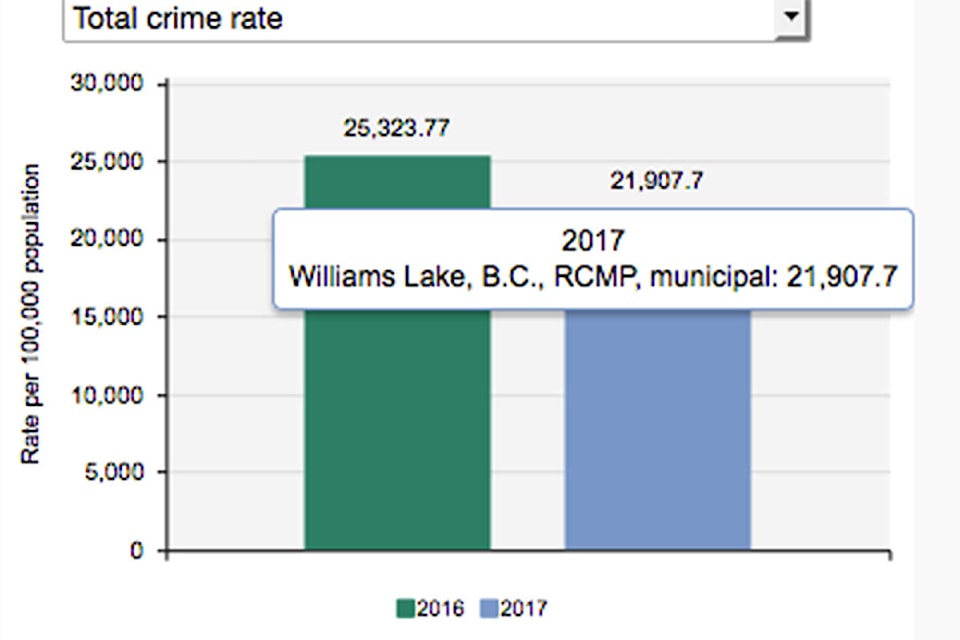Crime rates in Williams Lake are on the decline but still higher than the national average, a Statistics Canada report says.
According to Statistic Canada’s Canadian Community Crime Tracker, released Monday, total crime rates in Williams Lake dropped in 2017 with 21,907.7 per 100,000 compared to 25, 323.77 in 2016.
By comparison, Canada’s rate is 5,334.04 per 100,000 while B.C.’s is 7,416.63.
The statistics mean the city has dropped from a ranking of fourth in Canada to seventh on the Crime Severity Index.
Williams Lake Mayor Walt Cobb said he is pleased with the downward trend for the lakecity, which is notorious for ranking high on the crime index.
“We’ve certainly improved, especially when you look at the severity of violent crime,” Cobb said.
“And I have to thank the RCMP for that. I’ve really appreciated the work they have done.”
The RCMP’s special crime unit which focuses on repeat offenders has also made a big difference over the past year, he said.
READ MORE: Suspects break into Williams Lake business, make off with money donated for needy children
While the mayor said the numbers are still too high, he does feel the community gets a bad rap due to the way Statistics Canada calculates the numbers, using the municipal population rather than including the outlying areas that help make up the community.
“Crime isn’t as bad as the numbers would suggest,” Cobb said. “If you included our rural communities our numbers would look totally different.”
In 2017, Williams Lake was also under a state of emergency for several weeks due to wildfires, and the city was under evacuation for two weeks, with many residents choosing to stay away for much of the summer.
Across Canada, police-reported crime, as measured by both the crime rate and the Crime Severity Index (CSI), increased for the third consecutive year in 2017. The national crime rate rose 1 per cent, while the police-reported CSI increased 2 per cent. This was the third consecutive increase in the CSI following an 11-year downward trend from 2003 to 2014. The CSI is a measure of police-reported crime that takes into account both the volume and severity of crime.
Most of the provinces and territories reported increases in their CSI in 2017, however, B.C. bucked the trend and reported a five per cent decrease in the CSI.
More than half of Canada’s census metropolitan areas recorded increases in Crime Severity Index. B.C. cities such as Vancouver and Victoria, however, saw crime on the decline.
National homicide and attempted murder rates are up, as are police-reported sexual assaults.
Firearm-related violent crime continues to increase, with data from 2017 indicating there were more than 7,700 victims of violent crime in Canada last year.
Rates of cannabis and cocaine related drug offences have declined, but statistics show other drug crime has increased steadily.
“After cannabis, drug offences involving cocaine accounted for the next most frequent type of drug crime (15 per cent), followed by methamphetamines or ecstasy (13 per cent) and heroin (4 per cent). “Other drugs” such as prescription drugs, opioids (including fentanyl), and “date rape” drugs accounted for another 15 per cent of drug crime.”
READ MORE: Williams Lake RCMP on scene at Moxon Place residence
Statistics Canada said police-reported impaired driving rates are down for the sixth consecutive year, but drug-impaired driving is up.
Do you have a comment about this story? email:
editor@wltribune.com
Like us on Facebook and follow us on Twitter.
